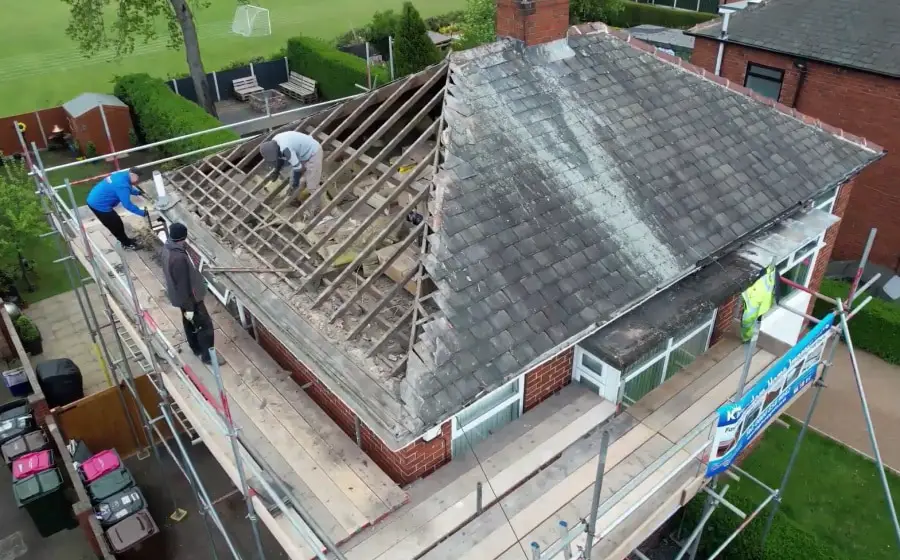The roof is one of the most vital components of any house. It provides shelter, protection, and a sense of security for the occupants. Yet, despite its significance, many homeowners tend to overlook the importance of regular roof maintenance and replacement. In this article, we will explore the critical question, “How often do you replace a roof on a house?” We’ll delve into the factors that influence the lifespan of a roof, signs that it’s time for a replacement, and the benefits of timely roof replacement.

Factors Affecting Roof Lifespan
The lifespan of a roof can vary widely depending on several factors. Understanding these factors is essential for making informed decisions about roof maintenance and replacement.
- Roofing MaterialThe type of roofing material used has a significant impact on the roof’s longevity. Common roofing materials include asphalt shingles, metal, wood, and clay tiles. Asphalt shingles typically have a lifespan of 20-30 years, while metal roofs can last 40-70 years or more. Quality materials and proper installation can extend a roof’s lifespan.
- Climate and Weather ConditionsThe climate in your region plays a crucial role in determining how often you’ll need to replace your roof. Areas with extreme temperature variations, heavy rainfall, or frequent storms may require more frequent roof replacements. Exposure to harsh UV rays can also contribute to roof deterioration.
- Roof MaintenanceRegular roof maintenance can significantly extend its lifespan. Routine inspections, cleaning, and addressing minor issues promptly can prevent larger problems from developing. Neglecting maintenance can lead to premature roof failure.
- Ventilation and InsulationProper roof ventilation and insulation can help regulate temperature and moisture levels in your attic and, in turn, extend the life of your roof. Inadequate ventilation can lead to ice dams in cold climates and excessive heat buildup in warm regions, both of which can cause roof damage.
Signs It’s Time for a Roof Replacement
While the factors mentioned above can provide a rough estimate of a roof’s lifespan, it’s crucial to pay attention to the following signs that may indicate it’s time for a replacement:
- LeakageWater stains on your ceiling or walls are clear signs of roof leaks. If you notice water damage inside your home, it’s essential to address the issue promptly.
- Missing or Damaged ShinglesIf your roofing material is missing shingles, or if they are curling, cracked, or blistered, it’s a strong indication that your roof is deteriorating. These issues can allow water to seep through and damage the underlying structure.
- Sagging RoofA sagging roof is a severe problem and can be a sign of structural damage. If you notice a sag in your roofline, it’s critical to have it inspected by a professional immediately.
- Mold or Algae GrowthMold or algae growth on your roof can indicate excess moisture and poor ventilation. It not only affects the roof’s aesthetics but can also lead to structural damage.
- Excessive Granule LossFor asphalt shingle roofs, excessive granule loss in your gutters or on the ground is a sign that the shingles are deteriorating and need replacement.
The Benefits of Timely Roof Replacement
Replacing your roof when necessary offers several benefits:
- ProtectionA new roof ensures your home remains protected from the elements. It prevents water leaks, mold growth, and structural damage, keeping your family and belongings safe.
- Energy EfficiencyNew roofing materials and improved insulation can enhance the energy efficiency of your home. This translates to lower energy bills and a reduced carbon footprint.
- Increased Home ValueA new roof can significantly enhance your home’s curb appeal and resale value. Prospective buyers are often willing to pay more for a home with a recently replaced roof.
- Peace of MindKnowing that your roof is in excellent condition provides peace of mind. You won’t have to worry about sudden leaks or extensive repairs.
Conclusion
In conclusion, the question of “How often do you replace a roof on a house?” is one that every homeowner should consider seriously. The frequency of roof replacement depends on various factors, including the roofing material, climate, maintenance, and ventilation. It’s essential to be proactive in inspecting your roof for signs of wear and tear and to address any issues promptly. Timely roof replacement not only ensures the safety and integrity of your home but also offers long-term cost savings and peace of mind. Remember that a well-maintained roof is an investment in the future of your home.



Leave a Reply